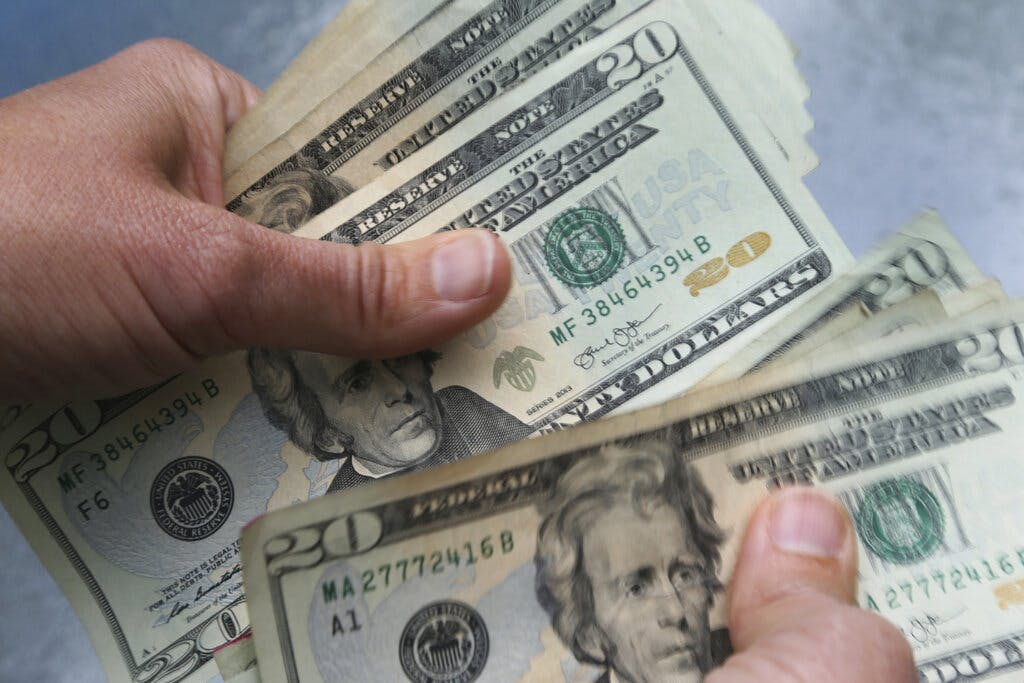The Dollar’s ‘Exceptionalism’?
If things don’t change, the ‘Biden Dollar’ will be the weakest monetary legacy of any president in American history.

The stubbornness of inflation — reflected in the numbers released this morning — awakens a reverie for the clink of sound money. The other day Bloomberg News was out with a story about how the dollar has been riding a wave of “exceptionalism” as it reigns “supreme.” That reign supreme, though, is against European scrip and other currencies of our trading partners, where it’s up, Bloomberg says, “a lofty 17% above its average over the last two decades.”
Only in an age of fiat money, though, can that be construed as a victory for the management of America’s unit of account in terms of the classical measure of monetary value. Those foreign currencies, after all, have plunged in respect of gold, and the dollar itself lurks near record lows. Just to mark the point, if President Biden serves out his term and present trends hold, the “Biden Dollar” would hold less true value than any other in history.
What an opportunity — politically — for Republicans to illuminate the destructiveness of Mr. Biden’s vast spending binge, which precipitated the inflationary spiral that eviscerated the dollar’s value. The political debacle of the dollar’s collapse is well parsed by our Lawrence Kudlow. He underscores the fact that under President Trump the consumer price index averaged but “1.9 percent at an annual rate.”
That’s less than the Fed’s target inflation rate of 2 percent. During President Biden’s term so far, the CPI has soared an average of 5.6 percent a year. Prices are running 18 percent higher than when Mr. Biden acceded to the White House. That’s reflected in the prices of, say, groceries, up 20 percent, and gas, up 25 percent. Inflation might be down from its peak, Mr. Kudlow writes, but it “continues to plague” our “middle-class working folks.”
This morning’s release of the Fed’s preferred inflation gauge, the personal consumption expenditure price index, validates Mr. Kudlow’s point. The index was up 2.4 percent in January over the prior year, some 20 percent above the Fed’s target. Stripping out food and energy prices, the index was up an even more alarming 2.8 percent over last year. So much for claims like Paul Krugman’s that “the war on inflation is more or less over, and we won.”
It’s no wonder that “many Americans are frustrated,” as the Associated Press puts it, “that overall prices are still well above where they were before inflation erupted three years ago.” One reason for the stubbornness of today’s inflation — despite the Fed’s dramatic boost in interest rates to levels not seen in 16 years — is that the price spiral was triggered not by economic conditions, but by a tsunami of trillions in federal overspending by Mr. Biden.
One of the prime culprits for Mr. Biden’s inflation was the redundant Covid stimulus bill of March 2021, which flooded the economy with $1.9 trillion in wasteful outlays at a time when an economic recovery was already under way. Mr. Biden, even then, was just getting warmed up, with deficit-fueled budgets that have tacked an extra $6 trillion to our national indebtedness. Our ocean of red ink now stands at $34 trillion.
Mr. Kudlow warns that if current trends hold, that number will soar to “$50 trillion in marketable federal debt.” That much debt, economist Veronique de Rugy warns, would fuel even more inflationary pressures. It’s a reminder that today’s crisis of debt is intertwined with the crisis of fiat money. A gold standard, after all, imposes discipline on central banks and governments, limiting their ability to manipulate the economy and run up unsustainable debt.
Ever the optimist, Mr. Kudlow contends that “a second Trump administration” would “be much tougher on federal spending.” Whoever wins in November, though, will need to confront America’s twin fiscal and monetary crises. That, as Mr. Kudlow makes clear, means addressing America’s spending addiction, a bipartisan affliction — not to mention restoring sound money. Otherwise, the days are numbered for the dollar’s “exceptionalism.”

